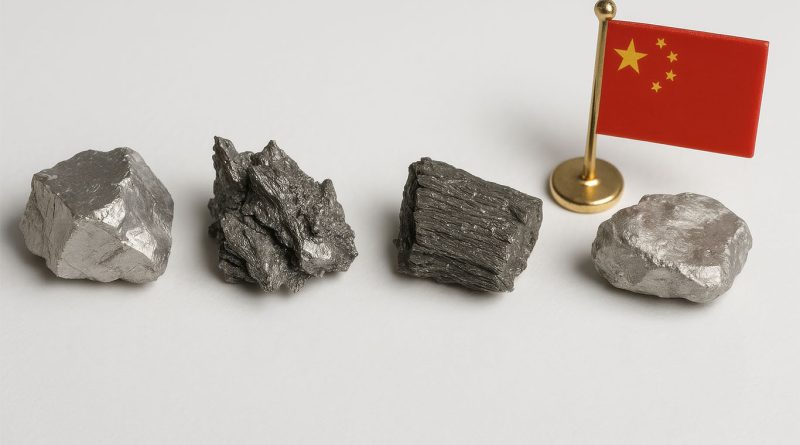China’s Rare Earth Curbs Shake Global Supply Chain Stability
Subscribe to our free newsletter today to keep up to date with the latest mining and minerals news.
In a move that escalates trade tensions, China introduced new export restrictions on a group of critical rare earth elements. The restricted materials include heavy rare earths such as dysprosium and terbium, along with rare earth magnets used in high-tech, defense, and renewable energy sectors. The licensing requirements could delay shipments by as much as 45 days, disrupting manufacturing timelines.
The decision followed sweeping tariffs from the United States, with duties reaching as high as 145 percent on a wide range of Chinese imports. While rare earths have previously been used in policy disputes, this latest action represents a sharper, more targeted use of China’s dominance in a strategically important sector.
Strategic minerals: Why rare earth elements matter more than ever
Rare earth elements are not particularly scarce, but they are complex and costly to process. Their value lies in their functionality. From magnets in electric vehicle motors to components in missile guidance systems, these materials are essential to modern technologies.
Dysprosium and terbium strengthen magnets against high temperatures, which is critical for electric motors and wind turbines. Samarium helps produce magnets that retain their properties under pressure. These materials are not easily replaced, and more than 90 percent of global refining capacity is located in China.
As industries transition toward clean energy and digital infrastructure, the importance of securing a stable supply of rare earths has become a national priority for many countries.
Economic fallout: Delays, price hikes, and supply insecurity
China’s new export controls have introduced immediate uncertainty for manufacturers in the United States, Europe, and parts of Asia. Extended lead times and rising prices are putting stress on supply chains already dealing with thin margins and long production cycles.
Companies like Tesla and Lockheed Martin are reportedly revisiting procurement timelines. MP Materials, the primary rare earth producer in the United States, has seen a surge in investor interest and aims to begin large-scale domestic magnet production by the end of the year.
Price projections suggest that some rare earth elements may rise between 20 and 40 percent in the near term. Smaller firms that rely on consistent supply at predictable prices may be especially vulnerable.
Retaliation and response: The US plan to reduce dependence
In response to China’s move, the US Department of Commerce is accelerating strategies to secure critical minerals. Plans include a national stockpile of rare earths, new mining permits, and incentives for companies building refining infrastructure in the United States.
Allied partnerships are gaining momentum. Australia is expanding its rare earth reserves and output, positioning itself as a reliable supplier. Canada is exploring similar opportunities. Meanwhile, recycling programs for magnets and industrial waste are becoming more viable as costs and demand rise.
Diversifying global rare earth supply chains is now a strategic objective. However, developing new refining and processing infrastructure will take several years. Industry leaders estimate it may take at least five years for non-Chinese supply chains to reach commercial scale.
In the meantime, investment is growing in alternative materials, resource recovery, and better mapping of undeveloped deposits. The European Union has introduced its own legislation to increase local production and reduce import exposure.
The rare earth sector is likely to become one of the most strategically important components of industrial policy for the next decade. Its trajectory will be closely linked to how nations manage access to resources that power the technologies of the future.
Sources:
